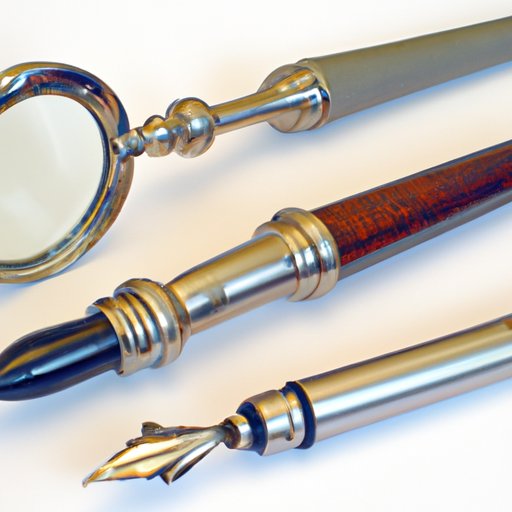
I. Introduction
Have you ever come across a unique item in your house or at a thrift store and wondered what it’s worth? Not knowing the value of an item can lead to missed opportunities for selling or buying at the right price. In this article, we’ll provide you with free ways to determine an item’s value so you can make informed decisions.
II. Research on Online Marketplaces
Online marketplaces such as Amazon, eBay, and Etsy are great resources for researching an item’s worth. By searching for the same or similar items, you can get an idea of the going rate. When researching online:
- Look for items in similar condition
- Compare prices from different sellers to get an average price
- Take into consideration the item’s rarity and demand
III. Check Auction Websites
Auction websites such as Sotheby’s and Christie’s are great resources for high-end items, but there are also many smaller auction websites that sell a variety of items. When checking auction websites:
- Look for similar items and their selling prices
- Consider the date of the auction and the conditions of sale
- Take into consideration the buyer’s premium and other fees
IV. Consult with Appraisers
If you have a valuable item that you need an accurate appraisal for, consider consulting with an appraiser. When finding an appraiser:
- Look for an appraiser with experience in the specific item or category
- Consider the appraiser’s credentials and education
- Discuss the potential costs and benefits of using an appraiser
V. Check with Antiques Dealers
Antiques dealers are knowledgeable in a variety of items and can provide you with information on the value of your item. When finding an antiques dealer:
- Look for dealers with experience in the specific item or category
- Consider the dealer’s credentials and reputation
- Discuss the potential costs and benefits of using an antiques dealer
VI. Visit Local Libraries
Local libraries can provide access to a variety of resources that can help you determine an item’s value. When visiting a library:
- Look for price guides and collector’s books
- Search for articles and journals related to the item or category
- Consider seeking the help of a librarian for further assistance
VII. Use Online Valuation Tools
Online valuation tools such as WorthPoint and Barnebys can give you an estimated value of an item based on previous sales. When using online valuation tools:
- Provide as much information about the item as possible
- Take into consideration the tool’s limitations and potential inaccuracies
- Compare prices from multiple online valuation tools for a more accurate estimate
VIII. Use Social Media
Social media can be a helpful resource when looking for feedback on an item’s value. When using social media:
- Post pictures and descriptions of the item on relevant groups or pages
- Be open to receiving feedback from others
- Consider the potential limitations and biases of using social media for determining an item’s value
IX. Conclusion
By using the tips and resources provided in this article, you can determine an item’s value for free. Whether you consult with an appraiser or check online marketplaces, the key is to gather as much information as possible to make informed decisions. Don’t let the fear of not knowing an item’s value hold you back from potential buying or selling opportunities.




